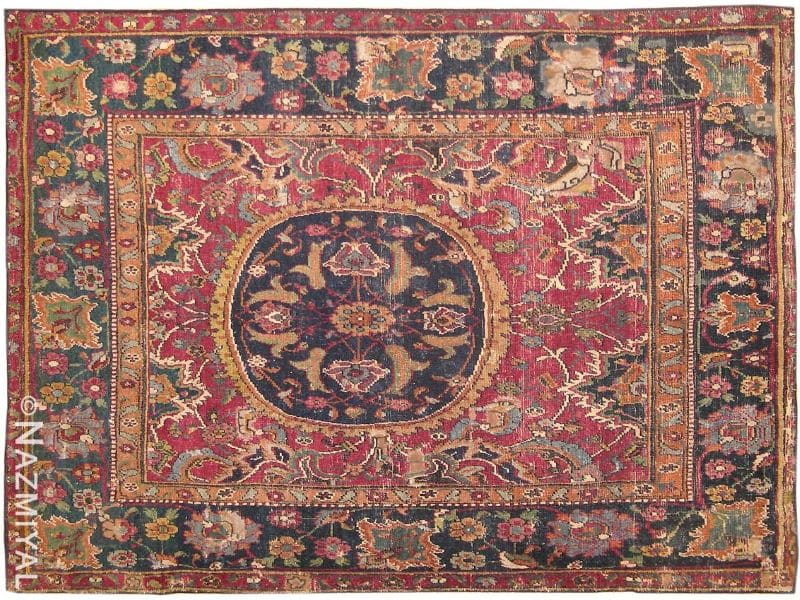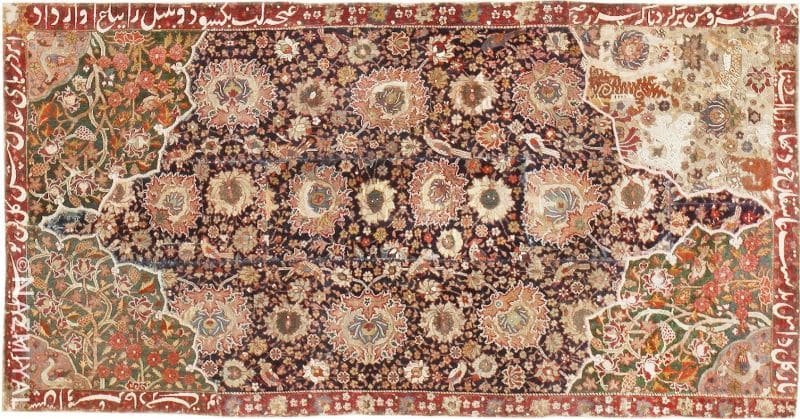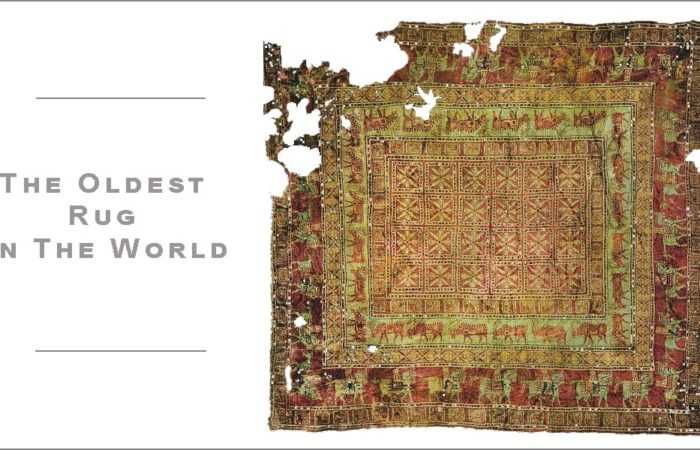What Is the Shah Abbas Rug Design Pattern And Who Was This Great Safavid Ruler?
There is no denying that the beautiful designs in Persian carpets are mesmerizing. They capture the imagination with their beautiful undulating vine work and intricate designs. The colors come together in a way that creates a visual impact like no other art form in the world. The characteristics of antique Persian rugs stand out in the world of art, but certain motifs within them have a special meaning. One of them that you may often see is the floral Shah Abbas rug design palmettes.
Leading Up To The Rule Of Shah Abbas
Before his rule, the Persian Empire was led by a Sufi leader who was against the adoption of Islam. The area had been under attack by the Mongols, and there was considerable political unrest.
Shah Abbas was able to strengthen the dynasty by replacing the small bands of Sufi soldiers with a regular standing army. By doing so, he was able to expel the Ottoman Empire and the Uzbek troops from Persian land.
Shah Abbas was also known for promoting commerce and supporting the arts. It was during his reign that Persian art reached its height, ushering in the golden age of Persian arts.
So let’s explore the history of this facinating historical Safavid ruler.
For Starters – Who Was Shah Abbas?
Shah Abbas I, also known as Shah Abbas the Great, was one of the most influential rulers of the Safavid Empire in Persia (modern-day Iran). He ruled over Persia from 1588 to 1629 and is often considered the greatest Safavid monarch.
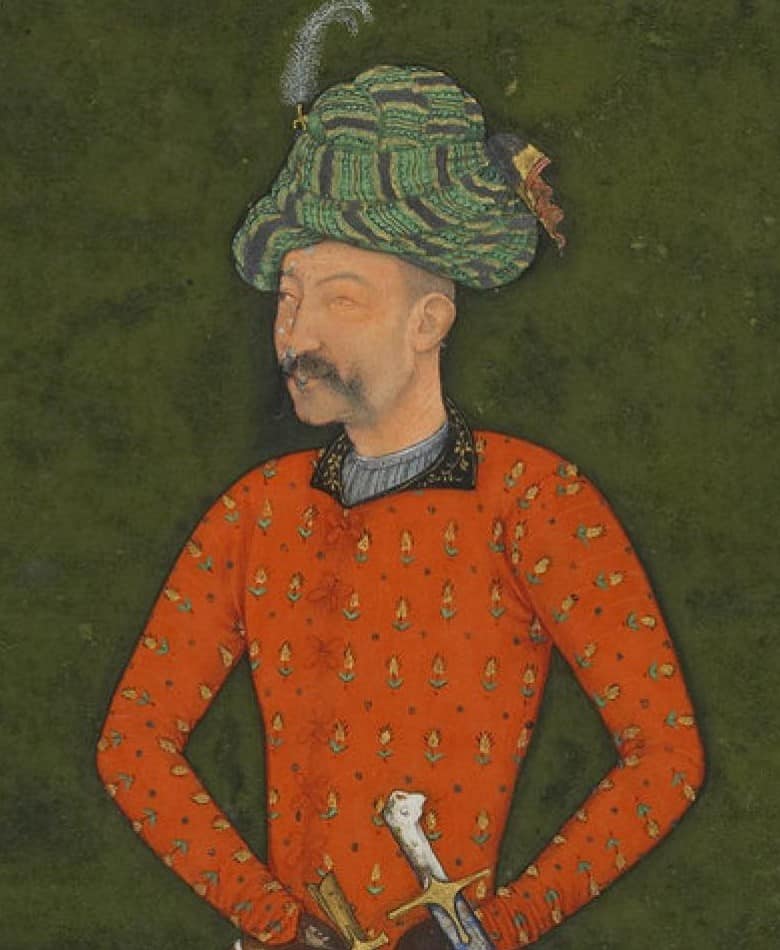
A portrait of Shah Abbas, painted by Bishn Das in 1613-19.
What Is Shah Abbas Most Known For?
Shah Abbas I is probably most renowned for his military, administrative, and cultural reforms, which revitalized and strengthened the Safavid Empire. During his rule, he implemented significant changes that centralized power, reorganized the military, and modernized the administration.
About The Military Campaigns Of Shah Abbas
He initiated a series of military campaigns to regain lost territories and secure the empire’s borders. These military campaigns led to the acquisition of important strategic regions, including parts of the Caucasus, Iraq, and present-day Afghanistan. Shah Abbas I also fostered trade and diplomatic relations with foreign powers, particularly with European nations such as England and the Netherlands.
The Cultural Impact and Significance Of Shah Abbas
Culturally, Shah Abbas I promoted the arts, architecture, and literature. He commissioned magnificent buildings, such as the Shah Mosque in Isfahan and the Chehel Sotoun Palace, which still stand as architectural masterpieces today. The Safavid art and culture flourished under his patronage, blending Persian and foreign influences.
How Did Shah Abbas Treat Other Groups and Religion?
Shah Abbas I pursued religious tolerance and actively sought to protect religious minorities, including Christians and Jews, from persecution. He relocated Armenians, Georgians, and other Christian populations to Isfahan, where they contributed to the city’s economic and cultural development.
Let’s explore this fascinating and familiar floral rug design element
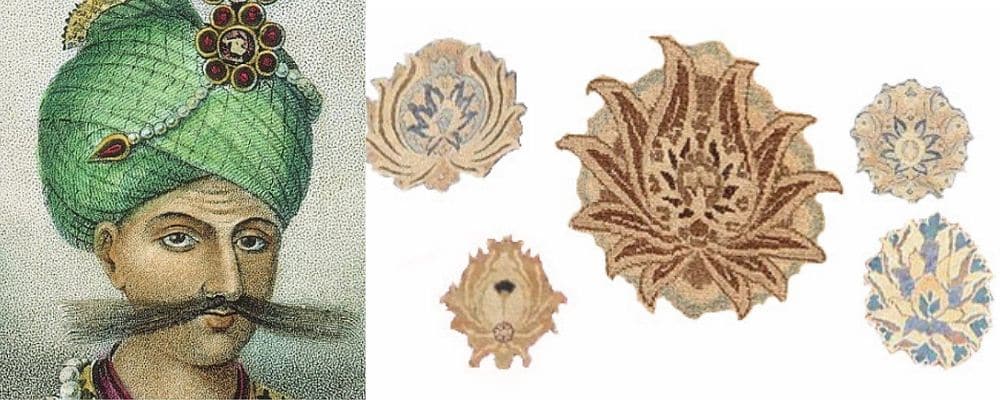
Shah Abbas Rug Design
Carpet Weaving Schools During His Rule
Shah Abbas moved the capital city to Isfahan, where he transformed it into one of the most beautiful cities in the world. It also became one of the most important carpet producing centers of the Empire as well. Carpets were produced by highly trained Persian rug weavers, who attended the formal weaving workshop schools that were set up for this purpose.
Master designers created works of art that would be a part of the legacy of the dynasty for hundreds of years. Antique rugs created during this time are some of the most beautiful rugs in the world. The artistry of carpets reached new heights, and many original designs and color combinations were introduced that would eventually become traditional motifs.
The Shah Abbas Persian carpet weaving schools were often tied to the art schools. Some of the carpet designers were also painters and skilled in other forms of art as well. The designs that they produced became highly desirable around the world and allowed the Safavid Dynasty to gain economic strength. The Shah Abbas era carpets became a significant industry and export for the country. They were also a way to show off the power of the dynasty and its wealth. During this time, the production of silk flourished in the area, which also helped the Safavid carpet weaving industry to gain notoriety on a world scale.
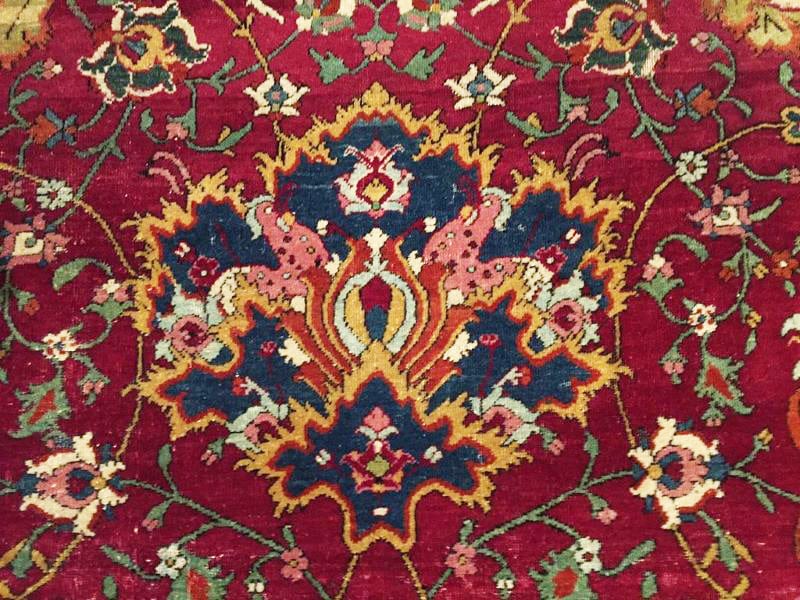
An example of a Shah Abbas palmette.
What Is The History Of The Shah Abbas Palmette Design Pattern?
The Shah Abbas rug design palmette became one of the most frequently found motifs. It stood for the Empire and all that it represented. It is a common floral design element on many carpets produced during that time. It is also still incorporated in many Persian carpet designs of today. Sometimes, you will see it in the designs of carpets from other countries, but in this context, it has lost its original meaning and its connection with Shah Abbas.
It is worth noting that although the design represented Shah Abbas and his dynasty, it also appeared in many different forms. There are regional variations, and it is apparent that some used a bit of artistic expression in its creation. It appears as a fan of palm leaves that are often found in all-over and medallion designs. You will also sometimes see it in the border of the rug. They are most frequently found in the Oriental rugs of Isfahan, Kashan, Mashad, and Nain. It is most commonly found in the carpets of Tabriz.
It is often found alongside lotus motifs, peony flowers, and among saz-style leaves. Sometimes, it is difficult to distinguish the Shah Abbas palmette from a peony or lotus design. However, if the representation is a peony or lotus, it will often be a simple design. The Shah Abbas palmette is similar but has deeper layers, more leaves and more flourishes. It is more complex artistically than the floral representations.
Although it is most common in Persian traditional rugs, now you will sometimes see it in the older carpets of India, Pakistan, and China. It is a popular design that has migrated throughout the globe but remained eternally connected with the rise of the Safavid Dynasty and Shah Abbas.
We invite you to search our rugs online to see some of the beautiful antique Persian carpets that have the featured Shah Abbas Palmette rug design. Perhaps you will see one that you must have for your own collection.
Some of our favorite Shah Abbas Palmette rugs from the Nazmiyal Collection:
This rug blog about Shah Abbas the ruler and the Persian rug design that is named after him was published by Nazmiyal Antique Rug Gallery in NYC.


